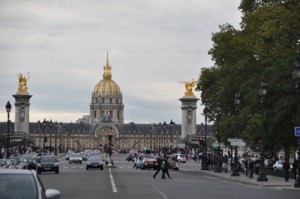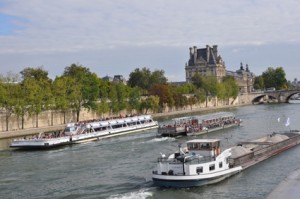Frail Frank soldiers on at 95 years.
My frail father, Frank, turns 95 today and my sister Anne and I are with him as he shuffles on his walking frame to Kafe Schulz, the restaurant in his nursing home where we will buy him a chocolate drink and cake.
Frank has always been a chatty fellow and talks as he walks. He is almost blind and has very little hearing, struggling to decipher the snippets of conversation he can pick up. Dad has always been a stick thin small man, no taller than five foot three inches. Now his legs are failing him and he huddles over his walking frame until we reach the security doors, where Anne keys in the code.
It’s hard to have a father in a locked ward, but he has some dementia, although to listen to him and his timely comments in context, it is hard to believe.
As we walk, we tell him that on Sunday we will have the family birthday party for him in the covered barbecue areahere where the fruit trees are in springtime blossom. Frank shoots back his first question; he wants to know who of his large three generations of offspring are going to be there.
“Who has the baby?” he asks and we inform him there are two babies, the first children of his grandsons Tyson and Jason, my own son and Anne’s second son respectively.
“I looked after Tyson when he was a little tacker,” he says. His grandfatherly duty when I returned to work 30-odd years ago ensures that he remembers Tyson better than some of the other 12 grand-children.
“And last week I looked after Scarlett, Tyson’s daughter,” I answer. “She looks exactly the same as Tyson, only she is a little girl.”
“Well, that’s life love.” he adds and it warms my heart to hear his term of endearment.
Each meeting with dad involves a recollection – almost word for word – of his life work as a “sparkie” and he tells us for the umpteenth time how he handled some “pretty big jobs in my time” as an electrical contractor.
Frank appears as fragile as glass, yet he is a freak for his age. He remains remarkably healthy. He takes no medication and does not appear to be in any pain. He has always had a cheerful personality and although he is one of the newcomers to the nursing home, he has quickly become a popular character.
He is a celebrity today, too, as all the residents in his section of the home have enjoyed a slice of his birthday cake. As we wander down the corridor, residents come and congratulate him.
He tells anyone who listens that we are his two daughters and he has the two best daughters in the world.
When we first admitted dad to the nursing home we were warned that he had dementia and would need to be moved to the high care dementia ward.
Because he had come from a Renmark aged care facility to Adelaide after a very long wait for a bed, we asked nursing staff to give him a chance to settle in before moving him again into high dependency.
However, dad has blossomed under the care of the staff and there is no more talk of dad moving anywhere within the Glynde Nursing Home. His sparkling personality and quick wit has ensured he stays put, where he watches the television much of the day and sleeps the rest of the time. He has a routine and his first activity is to read The Advertiser with his magnifying glass, a task which takes him all morning.
I suspect he recognises us by the sound of our voices rather than his sight which has deteriorated through glaucoma.
Last Saturday I called in to see him, but he was sound asleep. The races were on the television, so I turned it off. When he awoke, he chastised me. “Why did you switch off the races?” he asked.
“I was watching them. It’s a big race in Melbourne y’know. I like to watch the horses.”
Dad has never been interested in horse racing and herein lies the lesson. He is still broadening his interests even in the confines of his room.
As he slept I noticed his bottom jaw was slack and thought his bottom false teeth must have fallen out. When he awoke I didn’t like to point this out to him in case his jaw could no longer support his 60-year-old teeth. But after about half an hour, of his sloppy speaking, he felt them down the side of his body.
“Ah, look what I have found?” he says laughing in his jovial manner of a lifetime.
“My teeth!” and he proceeds to show them to me and then insert them into his mouth.
I shudder because the thought is always there that in 24 years, it may be me sitting in the comfortable armchair of a residential care facility.
As we reach the café and my sister goes to order chocolate, I reflect on his life as our father. Dad was a workaholic for most of his working life, running his electrical business and there is no denying he was what we would call today an “absent father”. Typical of the times, he did not see child-rearing as anything he should be involved in. He was the breadwinner and our mother, Florrie, raised the five children. Perhaps this is why he has been granted such a long life to allow us to engage with him on a much deeper level than seemed possible when he was a hard-working father.
In his dotage, he has kept his peculiar habit of winding his stick-thin legs around themselves as if they were indeed growing around a stake.
I smile to myself and remember when I was a skinny teenager he once told me that I had “legs like matchsticks with the wood scraped off”. Now he tells me I am too big and buxom and should try and lose some weight. He is still the parent and around him I return to my core self. No point in displaying airs and graces for my dad. After all, this is the man who was there when I was born; who knows me; who loves me unconditionally.
Dad was born in England and came to Australia when he was two and a half years old. Despite that tender age and despite lashings of our own Australian culture, he has always had a very British sense of humour.
One of my early boyfriends was a Chinese student, who had the usual Chinese accent. Whenever he telephoned, to my embarrassment, dad would call down the hallway saying “Who Flung Dung is on the dog-and-bone”.
When I would rebuke him in teenage hysteria, he would say “I’m a pommy, the telephone is always the dog-and-bone” ignoring the racist slight.
His chocolate drink arrives too hot to drink and in glee he clasps his palms together and raises them skywards. This is enough of a precursor to disaster that the ever watchful waitress returns with a big mug and some cold milk. “I think things will be safer if we cool down his chocolate drink,” she says, pouring the tea cup’s contents into the mug.
“You will do the MC thing on Sunday, won’t you love?” he asks.
“Of course dad,” I respond.
“I want to live to 100 so I can get a letter from the Queen, y’know. I’ve got a lot of time for the Queen. Her mum lived to 103 y’know.”
“I reckon I could make 103.”
Goodness, Frank is almost 100 years old anyway and his continuing engagement with life is a joy to behold. He may indeed make 100 years old as his English Aunt Edith lived to 100 years five months.



